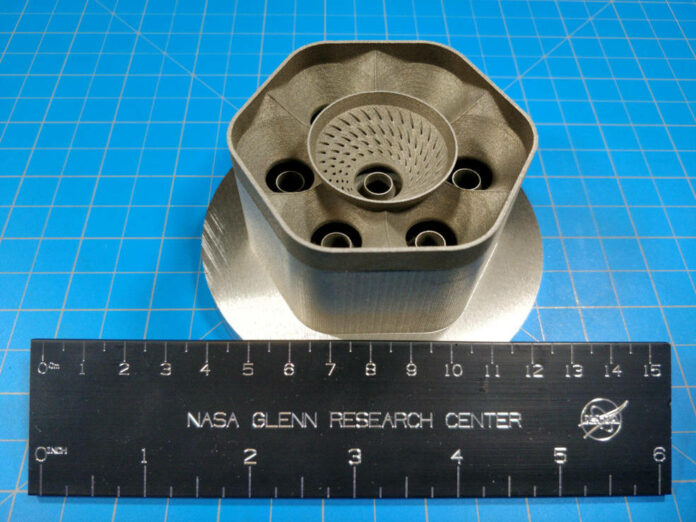
The combination of material modeling with AM drastically accelerated the material development process and enabled the development of a material which delivers better performance
As you may know, aerospace organization NASA is not a material producer but the company’s ability to leverage advanced manufacturing and additive manufacturing for aerospace manufacturing provides the team a solid expertise to develop new processes and materials as it is the case with the new NASA Alloy GRX-810, an oxide dispersion strengthened (ODS) alloy.
The new metal alloy can withstand extreme temperatures (up to 2,000 degrees Fahrenheit = 1093,333°C), survive more than 1,000 times longer than existing aerospace alloys, therefore withstand harsher conditions before reaching their breaking point.
The scientists at NASA used computational models to determine the alloy’s composition. Additive Manufacturing helped thereafter to uniformly disperse nanoscale oxides throughout the alloy, which provides improved high-temperature properties and durable performance. According to Tim Smith, a material research scientist at NASA’s Glenn Research Center , the combination of material modeling with AM drastically speeds up the material development process, which can move from years to weeks or a couple of months.
Speaking of thermodynamic modeling, one of many computational tools discussed within the NASA 2040 Vision Study, the expert confirms that they discovered the optimal alloy composition after only 30 simulations. This modeling tool produces results in much less time and with lower costs than traditional trial-and-error processes. The tool also avoids dead ends by showing researchers not just what metal types to incorporate but how much of each element to infuse into the composition, a press communication reads.
Ideal for high temperature applications, like those inside aircraft and rocket engines, “the nanoscale oxide particles convey the incredible performance benefits of this alloy,” said Dale Hopkins, deputy project manager of NASA’s Transformational Tools and Technologies project.
The use of this material will enable aerospace organizations to meet sustainability requirements that flights need to achieve as part of their journey to net zero emissions. In a jet engine for instance, the alloy’s higher temperature and increased durability capability would translate into reduced fuel burn and lower operating and maintenance costs. Not to mention that the material’s ability to enable lightweight applications does not sacrifice performance.
“This breakthrough is revolutionary for materials development. New types of stronger and more lightweight materials play a key role as NASA aims to change the future of flight,” said Hopkins. “Previously, an increase in tensile strength usually lowered a material’s ability to stretch and bend before breaking, which is why our new alloy is remarkable.”
This new alloy is just one example of how the Transformational Tools and Technologies project delivers innovative solutions through foundational research and cross-cutting tools.
Remember, you can post job opportunities in the AM Industry on 3D ADEPT Media free of charge or look for a job via our job board. Make sure to follow us on our social networks and subscribe to our weekly newsletter : Facebook, Twitter, LinkedIn & Instagram ! If you want to be featured in the next issue of our digital magazine or if you hear a story that needs to be heard, make sure to send it to contact@3dadept.com





